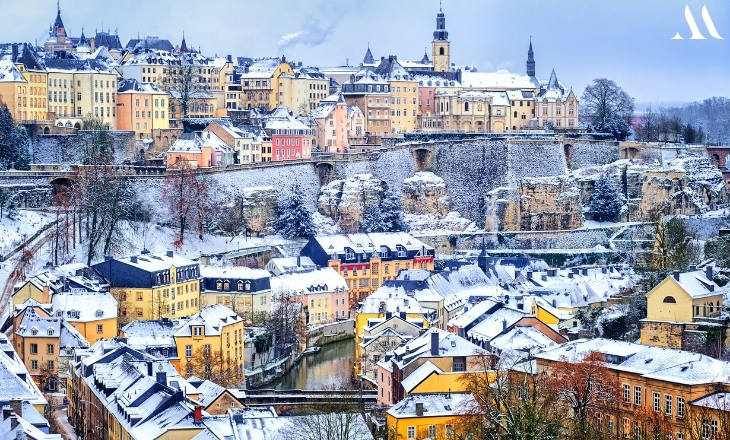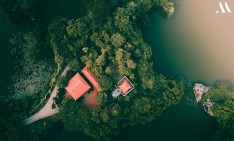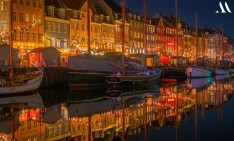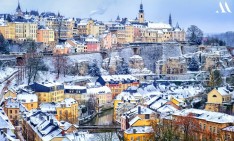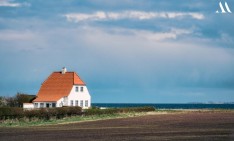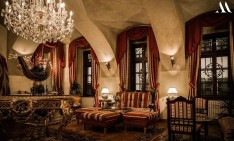Time seems to follow a different set of rules in these small countries, where life operates at a much slower pace compared to the hectic cities of larger nations. In these tiny countries, winding mountain roads connect villages, towns, and cities, all surrounded by fresh air and abundant nature. Here, tranquility takes precedence over the chaos of everyday hustle.
1. Andorra
Explore the stunning Pyrenees mountains - a place where time slows down. Visit the charming old villages and churches and learn more about this fascinating, inimitable micro-state and its heritage.
Background:
Nestled between France and Spain, Andorra is made of mountain valleys of the eastern Pyrenees. Though Andorra mostly has a Catalonian affinity, half the residents are from Spain, France, and Portugal. This small country has practically non-existent customs laws and taxes, which has turned it into a haven for international trade for shoppers coming from all over Europe for duty-free imported consumer goods, liquor, electronics, tobacco, and clothing.
Andorra has warm summers and cold, snowy winters, making it a perfect honeymoon destination all year round. However, it is more famous for winter sports and prime ski destination with its largest territory of ski slopes in the Pyrenees.
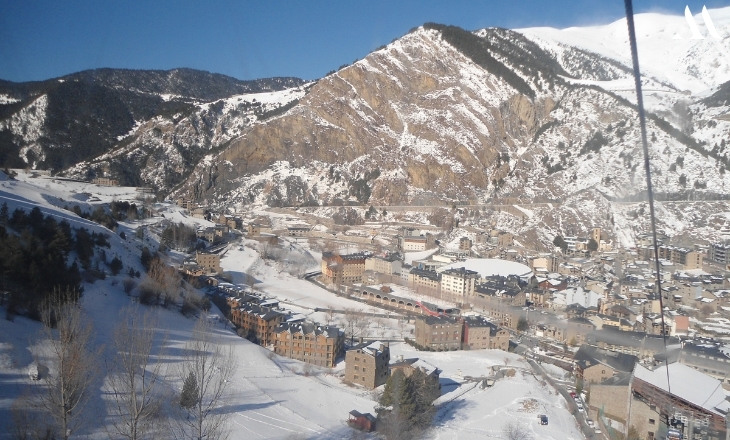
Area:
Andorra is 468 square kilometres (181 sq mi) with a population of approximately 77,000.
What to do there:
Shopping for its VAT-free rule. Andorra Shopping Autumn Festival is one of the best times to buy your favourite merchandise.
Rejuvenate at the Caldea Spa - Caldea is a large natural spring complex where water gushes at 70°C, rich in sulfur (S) and other mineral elements. The spa features numerous indoor and outdoor swimming pools, jacuzzis, and hydrotherapy areas, spread over 18 floors in the largest thermal spa glass complex in Europe.
Visit Churches and Museums—over 20 museums and over 40 churches dating back to Medieval times feature Romanesque art and architecture.
Hiking or Trekking - The country offers 60 trails amidst pristine nature, mountain scenery and lakes.
Explore quaint towns and villages
Ski - The mountains are high and the snow thick all winter long. It is one of the sunniest skiing destinations with over 300 km of the best, most modern ski slopes.
Enjoy Andorran gastronomy. Over time, the cuisine has integrated both French and Catalan influences. Andorran cuisine has always been closely connected with local products.
Christmas is regularly a busy time, with many travellers coming to spend some time between Christmas and New Year or for the weekend in between.
Accommodation:
Andorra is expensive; it is recommended you pick your stay based on the nature of the trip. The Grandvalira covers the largest ski area in the Pyrenees and has a variety of lodging from hotels, chalets and apartments, many of which are of a 4-star category. La Massana will, however, provide you with budget options.
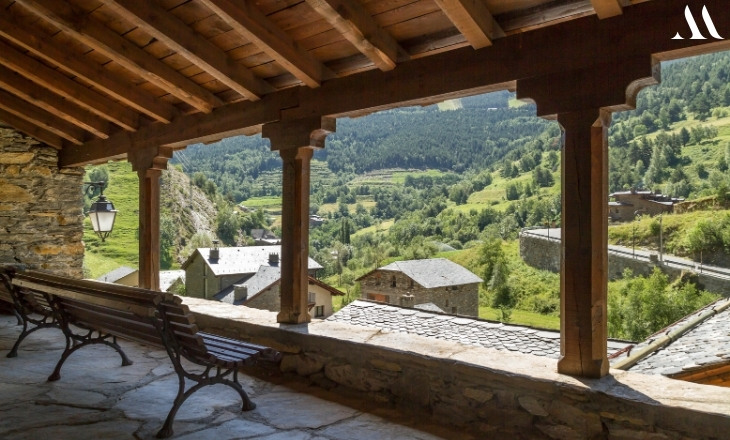
How to get there:
The nearest airport is in the Alt Urgell region, in Lleida.
The nearest train station is in France, just 7 miles by road from the border in L'Hospitalet-près-l'Andorre.
For travellers coming from Spain, the high-speed trains (AVE) stops at Lleida Pirineus station, mainly from Madrid-Puerta de Atocha and Barcelona Sants.
Visa:
Citizen of the European Union/ Schengen Area won’t need a visa to enter Andorra.
Citizens Of Non-EU Countries need Valid passport and Schengen multiple-entry visa as per country regulations.
2. Malta
One of the best places to explore the rich culture, warm climate, plentiful recreational areas, and architectural and historical monuments, out of which three are UNESCO World Heritage Sites.
Background:
Malta is a small island country located in the central Mediterranean Sea, just 80 km south of Sicily, Italy.
Despite its small size, Malta has attracted numerous foreign powers throughout history—including the Phoenicians, Romans, Normans, Sicilians, Greeks, Arabs, Swabians, Aragonese, Hospitallers, French, and British—due to its strategic importance as a naval base. A resilient nation that withstood numerous wars and their devastating aftermath, Malta's people are renowned for their warmth, hospitality, and generosity toward strangers.
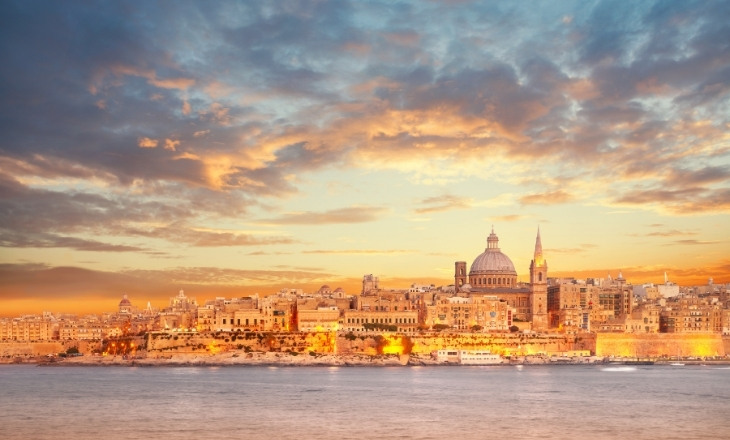
Area:
Malta is over 316 km2 (122 sq mi) with a population of approximately 515,000.
What to do there:
Being an island means an abundance of watersports activities to enjoy - go fishing, scuba diving, paragliding, windsurfing, water skiing or jet skiing or take an underwater safari from Sliema, go snorkelling near Popeye Village.
Visit Valetta for its grand churches, museums and palaces that has welcomed emperors, heads of state, artists and poets.
Visit the ancient capital of Mdina, also known as the Silent City & Unesco World Heritage sites such as the Hypogeum and the megalithic temples.
Visit Comino island with limestone cliffs and dotted with deep caves for the best swimming spots. It is a car-free zone, surrounded by crystal clear waters and is popular for day trips.
A tour to Three Cities or locally called Cottonera, is a collective name for the three fortified cities of Birgu, Senglea, and Cospicua are a taste of real-life and showcases Malta’s maritime history.
Blue Grotto Malta, Grand Harbour of Malta, Ta’ Ċenċ Cliffs and Mġarr Harbour Gozo are other popular sightseeings.
Indulge in Maltese Cuisine – the food echoes Maltese history with a strong Italian influence as well as Spanish, French, British and other Mediterranean cuisines.
Accommodation:
Malta offers a wide range of accommodation options to suit every type of traveler. From regular hotels to premium luxury resorts, there’s something for everyone. For a more authentic experience, you can choose from charming farmhouses and villas. There are also self-catering apartments, guesthouses, and hostels, perfect for young budget travelers. If you're looking for a more local experience, you can even stay with a Maltese family that hosts tourists. The options are endless.
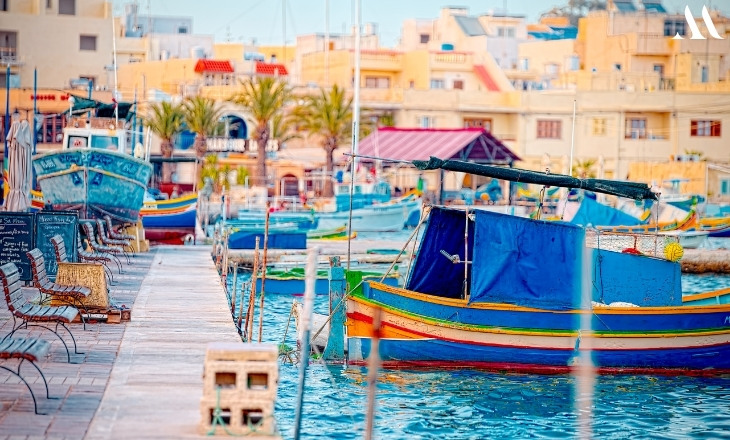
How to get there:
The best option is by plane. Malta International Airport is located between Luqa and Gudja and is well connected by flight from many European airport hubs.
Ferries run between Malta and the Sicilian port of Pozzallo, Italy, and take only 90 minutes one way to reach.
Visa:
Malta is an EU country. A valid passport and Schengen visa is required for third countries whose nationals are subject to the visa requirement (list)
3. Maldives
Take a trip to the Maldives for a luxurious holiday brimming with beautiful vistas of the endless azure sea, sunrises and sunsets, and the natural bounty of sandy beaches, blue lagoons, tropical bushes, and tall palms lining the shore, surrounded by rich coral reefs and diverse marine life.
Background:
The Maldives is located in the Indian Ocean, southwest of Sri Lanka and India. It is the lowest-lying country in the world, with an average elevation of just 1.5 meters above sea level. The archipelago is part of the Chagos-Laccadive Ridge, a vast submarine mountain range. Of the over 1,000 islands, only about 200 are inhabited. Several of these islands operate as exclusive private resorts for tourists, while others are local islands with mid-range hotels. Some islands are also used for industry and agriculture. The inhabitants are primarily Maldivians, an ethnic group that follows Islam.
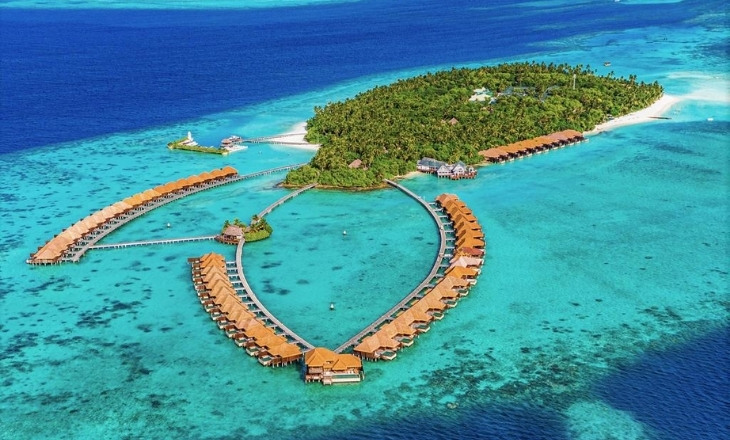
Area:
The Maldives has roughly 298 square kilometers (115 sq mi) with a population of approximately 515,000.
What to do there:
This close proximity to underwater life means unlimited snorkelling and diving. Baa Atoll (Hanifaru Bay) is one of the Maldives’ most famous marine diving sites. Besides, every resort provides plenty of motorable and non-motorable watersports activities.
Surfing is becoming increasingly popular here, especially in southern atolls, because of the turquoise water, perfect waves, and uncrowded locations.
Visit Male, the capital city, for local sightseeing.
Island hopping – this requires a speedboat if the islands are close.
Try Maldivian food – the cuisine is influenced by the Sri Lankan and south Indian tradition, especially Kerala. Fish curry and rice is a traditional meal here often served in resorts one of the dishes, but the best and authentic place to eat will be Male.
Accommodation:
The Maldives offers an abundance of accommodation options, making it one of the most high-tech and luxurious vacation destinations. Resorts range from extravagant, self-contained islands with iconic overwater bungalows to dive resorts and wellness retreats.
For budget-conscious travelers or business trips, there are also many standard and luxury hotels. For a unique experience, you can choose to stay in a guesthouse in a local town, where you’ll have the opportunity to mingle with locals and immerse yourself in the country’s culture. Additionally, there are "Liveaboards"—swanky boats that are as luxurious as hotels. These private yachts cruise around the islands, offering maximum tranquility on the sea.
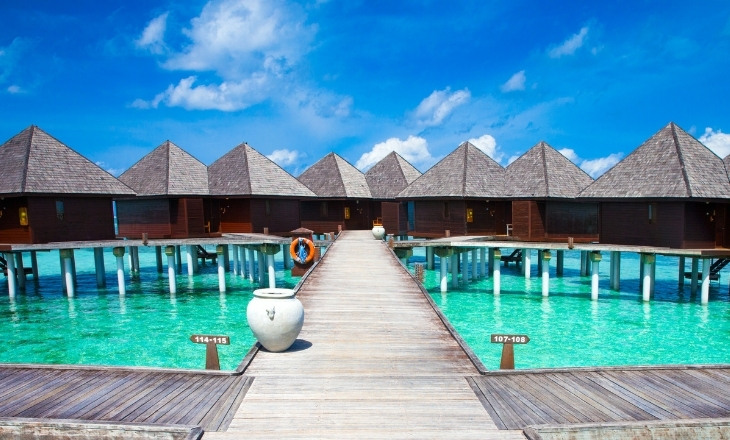
How to get there:
By plane, all international arrivals land at Velana International Airport, located on Hulhulé Island, just next to the capital city of Malé. Gan Airport, in the south, also handles international flights, including services to Colombo.
Getting around the Maldives is easy and varied, with options including domestic flights, boats, seaplanes, or private yachts.
Visa:
No pre-approved visa is required; everybody gets a free 30-day visa on arrival. The passport should have 6 months validity from the date of entry, a hotel booking voucher, a ticket out and proof of sufficient funds.
4. Liechtenstein
Travel to the tiny alpine country for beautiful mountains and valleys, creating pristine natural landscapes, a perfect addition to your holiday in the neighbouring countries.
Background:
Tucked away in the Alps between Austria and Switzerland, Liechtenstein is located at the crossroads of Europe. The early inhabitants of Liechtenstein included the Celts and Romans, as well as the Alemanni tribe, who settled in the region after 500 CE. Today, the modern population is predominantly of Germanic descent.
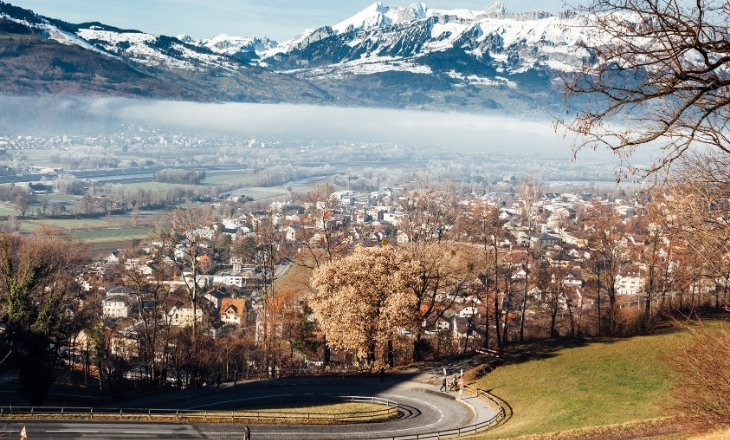
Area:
Liechtenstein has just over 160 square kilometres (62 square miles) with a population of approximately 38,700.
What to do there:
Go hiking in the Alps or enjoy skiing and snowboarding in Malbun, which are the main activities in Liechtenstein during the winter months for tourists.
Take leisure walks on Städtle, a beautiful pedestrian street that runs through the city centre of Vaduz. One of the best places for local cafes, shops, and museums.
Take a ride on the Citytrain that takes you on a comforting tour of the historic village of Mitteldorf, passing important sights like Rotes Haus (Red House).
Visit the Vaduz Castle from the outside - the official residence of the Prince of Liechtenstein. If you want to visit inside of a castle, then go to Gutenberg Castle located in Balzers.
Accommodation:
Liechtenstein offers a variety of accommodations to suit any traveler’s style and budget, from youth hostels and family-owned guesthouses to quiet luxury hotels. However, prices tend to be high, as the country follows the Swiss pricing model.
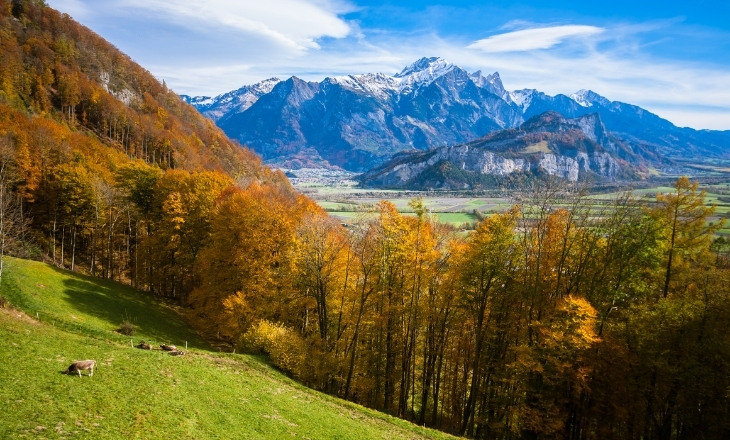
How to get there:
Liechtenstein doesn't have its own airport. The best option is to fly to Zurich and then take a train there. Train connections are available from Sargans or Buchs in Switzerland, or from Feldkirch in Austria.
Visa:
Liechtenstein is not an EU country, but it is a member of the Schengen Area. Non-EU nationals who are subject to visa requirements will need a valid passport and Schengen visa to enter the country.
5. Luxembourg
Visit the Grand Duchy of Luxembourg for a fulfilling holiday. Its small size means you don’t need an elaborate itinerary, leaving plenty of time to relax while still enjoying the country’s fascinating attractions. A melting pot of culture and history, Luxembourg boasts both natural beauty and state-of-the-art infrastructure. With one of the highest standards of living in the world, it’s also a relatively expensive destination.
Background:
A small country often overshadowed by its neighbors Belgium, France, and Germany, Luxembourg has a rich history that firmly establishes its significance in the EU. In fact, Luxembourg was one of the founding members of the European Union, and the Schengen Agreement was signed in the village of Schengen, located in Luxembourg. Throughout history, Luxembourg has been ruled by various states and monarchs. Yet, it has managed to maintain its political independence, largely due to its neutral stance between the surrounding powerful nations.
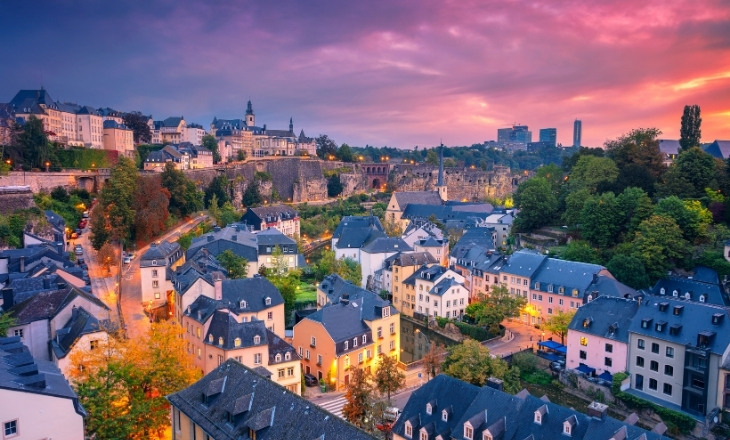
Area:
Luxembourg has 2,586 square kilometres (998 sq mi) with a population of approximately 626,100.
What to do there:
Visit the Bock Casemates – this UNESCO World Heritage site is the underground tunnels, first built in 1644, in the era of Spanish rule.
Luxembourg’s Museumsmile – all the history buffs, curious visitors and culture lovers will love this stretch. 7 museums within a mile!
Castles and fortifications – with over 50 castles to discover, including the huge restored castles (Vianden, Beaufort, Bourscheid, Bourglinster or Clervaux), you will not tire of interesting stories behind the many majestic castle ruins revealing the myths and sagas from medieval times. Try the "Valley of the 7 castles", a hiking trail running through the tranquil Valley of Eisch.
Go on an architectural tour - many buildings like the Grand Ducal Palace, churches, abbeys, bridges, villas and residences in Luxembourg are a part of its national architectural heritage, especially the Old City of Luxembourg.
Go on hiking, biking, walking natural trails at Berdorf’s dense forests with countless streams and even some caves. Looking for rejuvenation, then opt for wellness activities in Domaine Thermal de Mondorf thermal spa.
Unwind in the evenings at the premium restaurants and bars of the Grand Rue or visit Grund are a perfect place to enjoy the nightlife.
Accommodation:
In Luxembourg, you can choose from various accommodations, ranging from family-owned hotels to historic and luxurious castles, such as those in Vianden. For those who prefer to stay surrounded by nature, mobile home rentals are also available. Budget travelers can opt for youth hostels, while families seeking more privacy can enjoy the comfort of guesthouses offering dedicated spaces.
-1605715504.jpeg)
How to get there:
The flight arrives at Luxembourg-Findel International Airport, which is 6km outside Luxembourg-City. It is also easily accessible by train and bus from all borders and neighbouring countries.
Visa:
Luxembourg is an EU country and a member of the Schengen Area. Non-EU nationals who are subject to visa requirements will need a valid passport and Schengen visa to enter the country.
6. Monaco
Swanky Monaco is a sovereign microstate on the French Riviera, often referred to as a "Billionaires' Playground." If you're in the mood to be dazzled by lavish wealth, luxurious casinos, and glamorous events like the Monaco Grand Prix and the Monaco Yacht Show, then this is the place to be!
Background:
The second smallest country in the world, Monaco is bordered by France and boasts the Mediterranean Sea as its "front yard." Its primary sources of revenue come from luxury resorts, casinos, and recreational facilities catering to tourists. Monaco is also a major banking hub, known for being a tax haven for businesses.
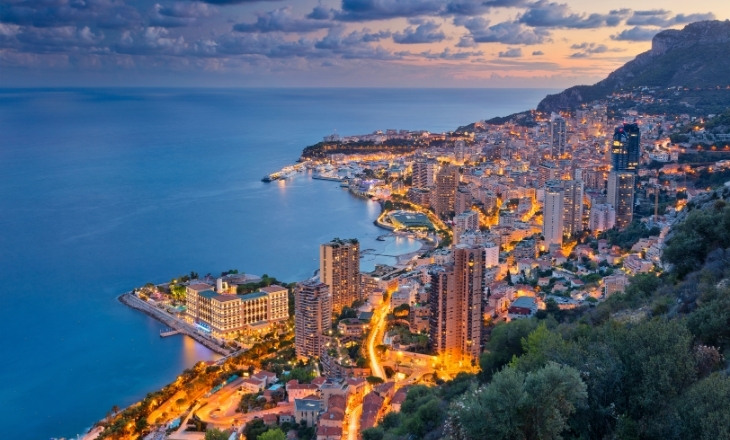
Area:
Monaco has an area of 2.1 km2 (0.81 sq mi) with a population of approximately 19,000.
What to do there:
Stroll through the Monaco-Ville (Le Rocher) – a medieval village from the time the Grimaldis made Monaco their headquarters in the 13th century. This old town on the rock is an astonishingly picturesque site, made up almost entirely of pedestrian streets and passageways.
Oceanographic Museum Of Monaco – one of the oldest underwater museum in the world, dating back to 1903.
Visit the Port Hercule - magnificent and offering mooring and anchoring possibilities for up to five hundred vessels, some of which are enormous and elegant. One of the best leisure activities is to take time out of the day to simply have a drink by the waterfront and admire the fanciful superyachts.
Yacht charters are very popular in Monaco, and numerous companies can arrange a sailing trip either on a small boat, a bareboat yacht or on a luxurious, swanky superyacht.
Monaco Grand Prix is one of the most celebrated Formula One racing events in the world. The Circuit de Monaco, spanning 3.337 km, is one of the most challenging tracks, featuring sharp corners and a layout that makes overtaking extremely difficult.
Accommodation:
Monaco is an expensive destination, so if you're traveling on a budget, consider exploring nearby towns for more affordable options. While Monaco offers a wide range of mid-range to luxury hotels and resorts, you’ll find more budget-friendly accommodations outside the city-state.

How to get there:
Arriving in Monaco is easy. The nearest airport is Nice Côte d'Azur International, which is well connected to nearly all of Europe's major cities. Monaco's Monte Carlo station also offers excellent connections to major train stations across the region.
Visa:
Monaco is not an EU country and is not directly part of the Schengen Area. However, due to its customs union with France, it is considered part of the Schengen Area for practical purposes. Therefore, non-EU nationals who are subject to visa requirements will need a valid passport and Schengen visa to enter Monaco.
In August 2007, Andorra, Liechtenstein and Monaco were on the "blacklist" or "The List of Uncooperative Tax Havens " by the Organization for Economic Co-operation and Development(OECD).
Schengen Area
The passport-free zone for the free movement of persons in the European Union is known as the Schengen Area. It consists of 29 countries that have abolished their internal borders. Non-EU countries such as Switzerland and Lichtenstein enjoy free movement within this territory as well. If you hold a passport from one of the EU countries, you do not need to show a passport when travelling between countries within the Schengen zone.

.png)

